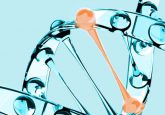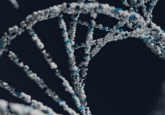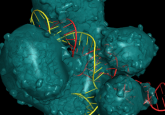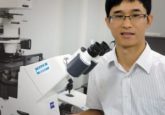Researchers combine genetic techniques to identify height genes

Researchers identify new height genes utilizing both CRISPR knockout gene screening and genome-wide association study data.
An international collaboration of researchers combined two genetic methods for the first time to identify genes associated with height. The scientists, led by senior author Nora Renthal from Boston Children’s Hospital and Harvard University (both MA, USA), paired results from a CRISPR genetic knockout screen of 600 million mouse cartilage cells with information from human genome-wide association studies (GWAS) on height. The results identified 145 genes that affect cartilage cell growth and maturation. The team hopes to study some of these genes further and believes the method could improve GWAS gene assignment algorithms.
GWAS enable scientists to identify genetic hotspots throughout the human genome that are associated with height. However, these areas may contain multiple genes, so it is difficult for scientists to track the influence of single genes. This means that it is impossible to draw cause-and-effect conclusions from the data. In contrast, CRISPR knockout gene studies enable scientists to identify single genes that, when deleted, alter an outcome.
In this study, researchers utilized a CRISPR knockout gene study to identify genes that impact cartilage cell growth and maturation. This relates to height genes as cartilage growth plates at the end of bones harden as children develop, impacting stature in adulthood. Researchers studying the genetics of skeletal disorders may use height as a metric to understand processes of bone growth and formation as it is easily measurable.
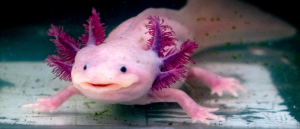 Senescent cells enhance limb regeneration
Senescent cells enhance limb regeneration
Researchers at the Dresden University of Technology find that cellular senescence promotes dedifferentiation of muscle tissue and enhances limb regeneration in salamanders.
After screening 600 million mouse cartilage cells, the team identified 145 relevant genes. While some of these genes have previously been linked to skeletal disorders, others had not previously been associated with a role in growth plate maturation and bone formation.
Comparing these genes to GWAS height data from the international Genetic Investigation of ANthropometric Traits (GIANT) consortium project, the researchers found that some overlapped with GWAS hotspots for height genes. This precisely identified the location of genes that alter cartilage cell growth and maturation, which also affected height. Studying these further, the researchers identified that many of the genes associated with impacting height led to early cartilage cell maturation.
Renthal highlighted that the mouse studies may not directly translate to humans and that, as observational studies, GWAS cannot draw out a cause-and-effect relationship for height. However, this study provides a new method that brings the two approaches together.
The researchers plan to utilize this method to study the impact of hormones on cartilage cells. They will also investigate some of the 145 genes that had no known connection to skeletal growth in the hope of finding new genes and pathways involved in bone formation and growth.
“I see patients with skeletal dysplasia, where there isn’t any treatment because genetics made their bones grow this way,” says Renthal. “It’s my hope that the more we can understand about the biology of the growth plate, the more we would be able to intervene at earlier times in growing skeletons and the life of a kid.”
